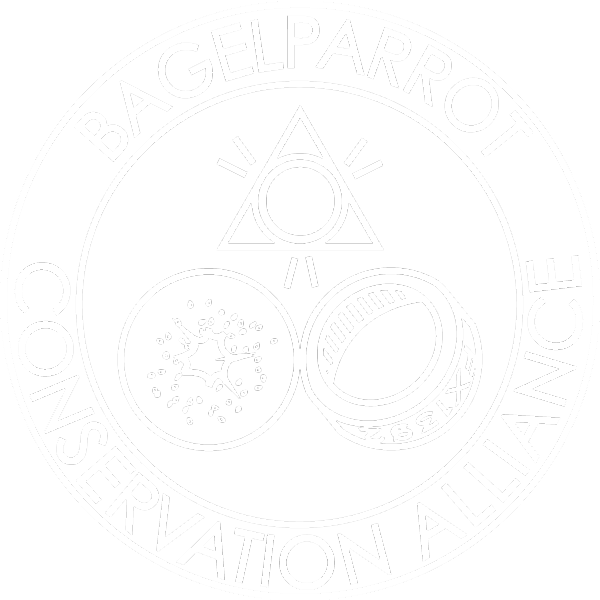Tiskita Biological Reserve, Costa Rica. Deep in the lush jungles of the South Pacific coast of Costa Rica, the forest trees are getting a splash of color. Up until very recently, scarlet macaws were extinct from the area. Due to habitat loss and relentless poaching over the last several decades, only a handful of wild populations remain in Central America, a region once teeming with macaws. However, thanks to the decade-long reintroduction efforts of a team of biologists, a stronghold of scarlet macaws is now starting to repopulate the Pavones and Osa Peninsula regions of Costa Rica.
Bagelparrot has teamed up with Ilona Thewissen and Chris Castles, who were at the helm of one of the most successful breed-for-release programs in the world. For over ten years, they bred and hand-reared baby macaws from a breeding stock of rescued poached birds and ex-pets (the CR government has Chris on speed dial when they find poached or injured macaws). Since 2002, they have released 75 scarlet macaws at the Tiskita Biological Reserve, with a 94% survival rate. Now with a viable population thriving independently of humans in the wild, the released macaws have started having babies of their own (with a 83% breeding success rate). This is an incredible breakthrough in the world of biology and conservation! With a growing population of macaws, poaching is back. Currently, poached chicks confiscated by the government or previously released macaws who get injured have no place to go.
Help us build an aviary so that poached and injured macaws have a chance to be rehabilitated by expert biologists and released to fly free in the wild!
Every feature of the proposed aviary has been designed with the needs of macaws in mind. The main flight aviary will be 10m x 6m, large enough to allow ample room for flight and stimulation. The previous makeshift cage was only 3m x 2m, meant only for emergencies, and two macaws who ended up staying longer during a soft release started plucking out of stress.
With your support, this aviary will be built to last. Constructed of galvanized, rust-resistant metal, it will be durable enough to withstand even the harshest elements of Costa Rica. However, it can also be broken down and re-assembled and moved to a new location if required. The roof will have zinc sheets for rain protection; the rest is open for unobstructed views of the sky (a great resource to learn about local predators). In addition, the exterior will be lined with 1m-tall plates for extra-secure snake-proofing.
Tiskita Biological Reserve
The site of the proposed aviary is on the Tiskita Biological Reserve in the Pavones region. Chris and Ilona have released 75 macaws here here since 2002. Located in the “deep south” of Costa Rica, Tiskita is a nine hour drive from San Jose and two hours away from the closest airport. Situated among tracts of pristine primary and secondary tropical rainforest, the area is one of the most biodiverse places on earth. Still largely untouched by agricultural farming and tourism, it is an ideal location for a viable macaw population. Species common on the reserve include squirrel monkeys, frogs, sloths, iguanas, and of course, scarlet macaws!



